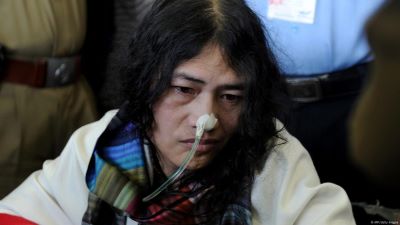Context-
Hunger strikes are a potent form of protest where individuals refuse to eat to highlight a cause, often facing severe physical and mental consequences. This form of protest raises numerous ethical questions, particularly concerning the provision of medical care against the protester's will and the use of force-feeding.
Historical Context
● Revolution by Starvation
The concept of hunger strikes as a militant form of protest took shape in the late 19th century. Russian political prisoners in Tsarist times, including a young Leon Trotsky, used hunger strikes to protest against harsh prison conditions. Similarly, in 1909, suffragette Marion Wallace Dunlop initiated a hunger strike to be recognized as a political prisoner, inspiring her fellow suffragettes to adopt the same method. The authorities' response, which included force-feeding, led to severe health consequences and even deaths among the protestors.
● Impact of Irish Republicans
Hunger strikes by Irish republicans profoundly influenced the development and popularization of this protest method. In 1920, Terence MacSwiney died after resisting force-feeding, an event followed by the martyrdom of 20 other Irish revolutionaries. These hunger strikes underscored the severe personal costs involved and highlighted their effectiveness in drawing attention to political causes.
Hunger Strikes in India
● Colonial Era Protests
In India, hunger strikes have a long history as a form of protest against colonial rule and social injustices. Revolutionaries from various political backgrounds used hunger strikes to highlight their causes. Pandit Ram Rakha, a Ghadarite, died protesting the forcible removal of his sacred thread by jail authorities. Similarly, Ghadar Party leader Sohan Singh Bhakna used a hunger strike to protest the segregation of Mazhabi Sikhs in Lahore Central Jail. Even Vinayak Savarkar, who initially opposed hunger strikes, pledged to starve himself to death if Nani Gopal Mukherjee did not end his 72-day fast protesting prison conditions, leading to Mukherjee's eventual disengagement.
● Bhagat Singh and Jatin Das
The most notable hunger strike in colonial India was undertaken by Bhagat Singh and Batukeshwar Dutt in protest against abysmal jail conditions. Their strike was joined by several comrades, including Jatin Das, whose death after a 63-day hunger strike in 1929 became a significant event in India's struggle for independence. Das's martyrdom highlighted the extreme physical toll of hunger strikes and their potential to galvanize public support for political causes.
● Mahatma Gandhi’s Approach
Mahatma Gandhi’s perspective on hunger strikes, which he preferred to term 'fasting,' was rooted in non-violence. He believed fasting should aim to reform rather than extort. Gandhi undertook several significant fasts, including one in 1922 following the Chauri Chaura incident, where he fasted for three weeks to quell violence among protestors. In 1932, he undertook another fast unto death to oppose the British government's decision to reserve legislative seats for Dalits. This decision was contentious and opposed by Dr. B.R. Ambedkar, who believed in direct political representation for Dalits. Although Dr. Ambedkar eventually acquiesced, he later criticized such methods, favoring constitutional approaches over what he termed "the grammar of anarchy."
Hunger Strikes in Independent India
● Potti Sriramulu’s Protest
The first major hunger strike in independent India was Potti Sriramulu's 1952 fast unto death for a separate Andhra Pradesh state. His death after 58 days of fasting sparked widespread protests and ultimately led to the creation of Andhra Pradesh. This event demonstrated the powerful impact of hunger strikes in post-independence India.
● Irom Sharmila’s Long Protest
Another significant hunger strike was Irom Sharmila's 16-year fast against the Armed Forces Special Powers Act (AFSPA) in Manipur, which began in November 2000 after the alleged gunning down of 10 civilians by the Assam Rifles. Sharmila was arrested for attempted "suicide" and held in police custody, where she continued her hunger strike. Her prolonged protest drew international attention to the draconian measures in Manipur.
Ethical Dilemmas and State Response
● Monopoly on Violence
In independent India, the state often seeks to suppress hunger strikes, sometimes resorting to violence and force-feeding. Authorities may attribute the death of a hunger striker to unrelated ailments to avoid accountability. For instance, Bengali revolutionary Mohan Kishore Namadas's death was attributed to "lobar pneumonia," ignoring the force-feeding that preceded it. Some prison personnel, refusing to participate in such abuses, highlight individual resistance within the state apparatus.
● Social and Ethical Questions
Hunger strikes raise complex moral questions. Is it ethical to provide medicine or nutrition against the striker's will? Is force-feeding a violation of the Hippocratic oath? Theologian Herbert McCabe’s reflection on Bobby Sands's death during a hunger strike compares the state's role to murder and the striker’s act to suicide, posing challenging ethical considerations.
● Addressing Inequities
Hunger strikes are a desperate form of resistance, underscoring the need for societies to address the demands of protesters and rectify state inequities. The brutal suppression of hunger strikes can only lead to tragedy. As Yeats poignantly noted in "The King’s Threshold," the public outcry against perceived injustice sustains the practice of hunger strikes as a protest method, hoping for a collective moral awakening.
Conclusion
The history of hunger strikes reveals their dual nature as both a powerful tool for social and political change and a method fraught with ethical dilemmas. Societies must grapple with these issues to ensure that the rights of protesters are respected and that the underlying causes of such protests are addressed. Hunger strikes will continue to be a part of the landscape of resistance as long as there are injustices that drive individuals to such extreme measures.
|
Probable Questions for UPSC Mains Exam- 1. How have hunger strikes historically influenced political and social movements in various regions, and what ethical dilemmas do they present to both the protesters and the state authorities? (10 Marks, 150 Words) 2. In what ways can societies and governments address the demands of hunger strikers while respecting their rights and ensuring that the underlying causes of their protests are adequately addressed? (15 Marks, 250 Words) |
Source- The Hindu







